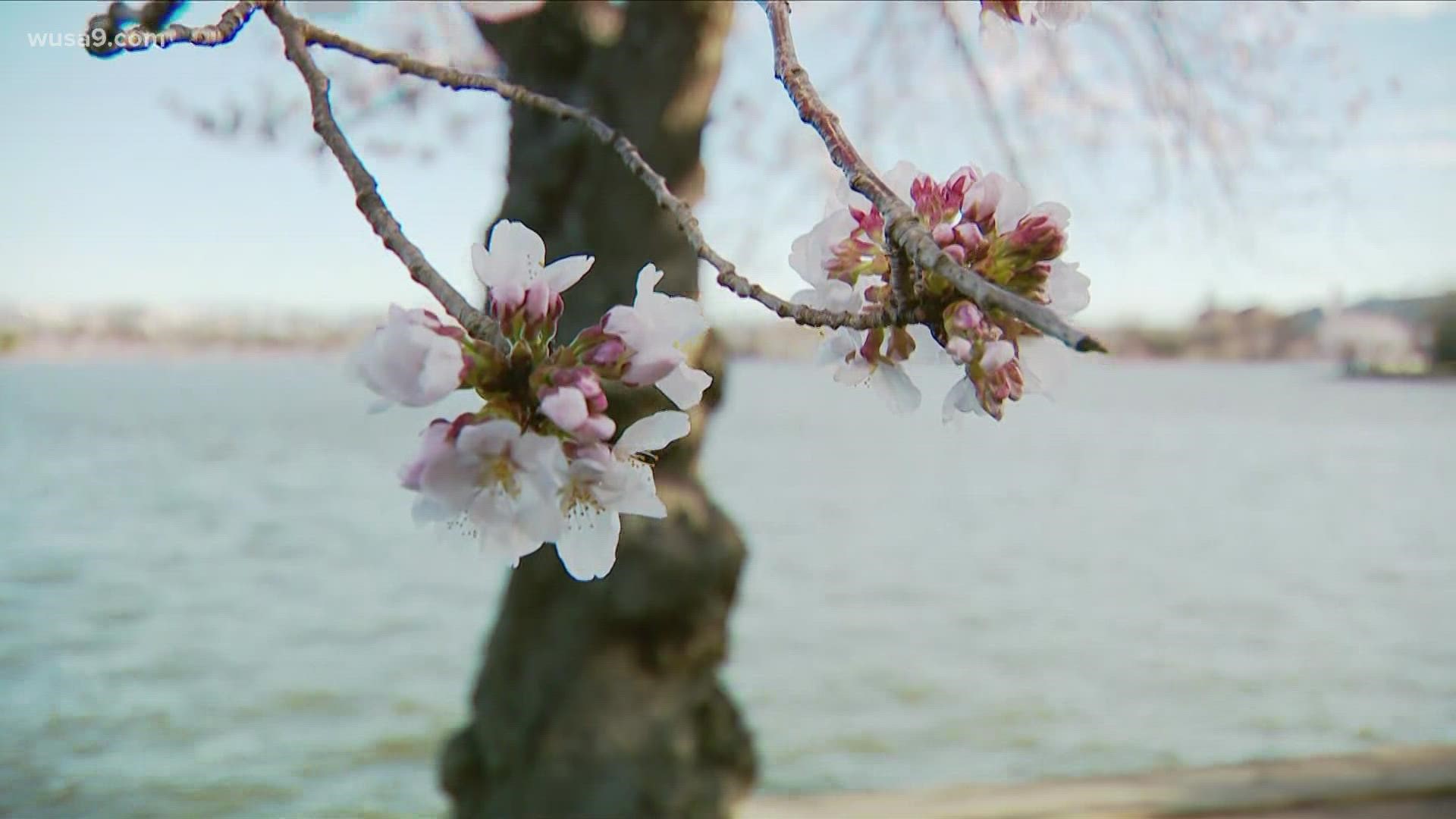WASHINGTON — Every year the National Park Service (NPS) tracks the six stages of cherry blossom growth:
- Green bud
- Florets visible
- Extension of florets
- Peduncle elongation
- Puffy blossom
- Peak bloom
Peak bloom, or when 70% of the Yoshino Cherry (or Prunus x yedoensis) is open, was forecast to be March 22-25 this year. But after two years of muted celebration due to the ongoing pandemic, the blossoms couldn't help themselves and made their debut a bit earlier than expected this season.
As of March 21, the trees are in the final stage of the cycle: peak bloom.
Weather's Influence
Weather can speed up or slow down the blooming process. Warmer weather helps the cherry blossoms bloom faster, while cold weather can slow down the growth.
One of the earliest blooms was March 15, 1990, according to the National Park Service. And due to cold weather, one of the latest blooms was April 18, 1958.
Recently, high temperatures have topped out in the 70s in D.C., helping along the blooming process.
However, when we get a warm-up followed by a late freeze, it can prove detrimental to the cherry blossoms. Such was the case four years ago in 2017, when a late freeze between March 14-17 killed nearly half of the cherry blossoms. Peak bloom was March 25 that year.
NPS also has teams of scientists studying the impact of climate change on cherry blossoms, and what peak bloom data can tell us about climate change.
"Cherry tree dates vary from year to year, but the long-term trend shows earlier and earlier blooming," said NPS climate change scientist Patrick Gonzalez.
Since 1946, D.C.'s average temperature has increased by 1.6 C per century, which is double the global rate. In flowering trees heat breaks winter dormancy, so scientists believe earlier cherry blooming is caused by climate change.
This year's bloom is set to be earlier than in 2021.
"If we don't reduce or emissions from cars, power plants and deforestation additional warming could advance spring blooming by another week to month by the end of the 21st century," Gonzalez said.
Flooding at the Tidal Basin is also a problem for the cherry blossoms. NPS says cherry trees are meant to grow on dry land and require fresh water. When the Tidal Basin floods, freshwater along with brackish water flows over the roots of the cherry trees. Brackish water is a mix of salt and fresh water.
The National Park Service is concerned that salt intrusion in the soil can weaken and eventually kill a cherry tree.

